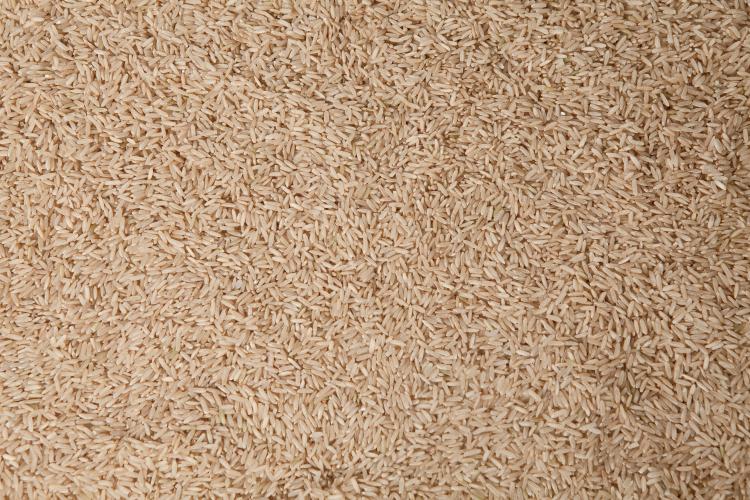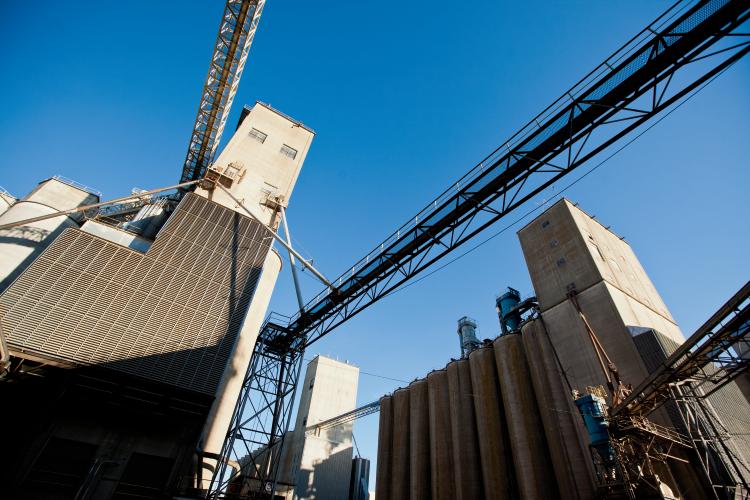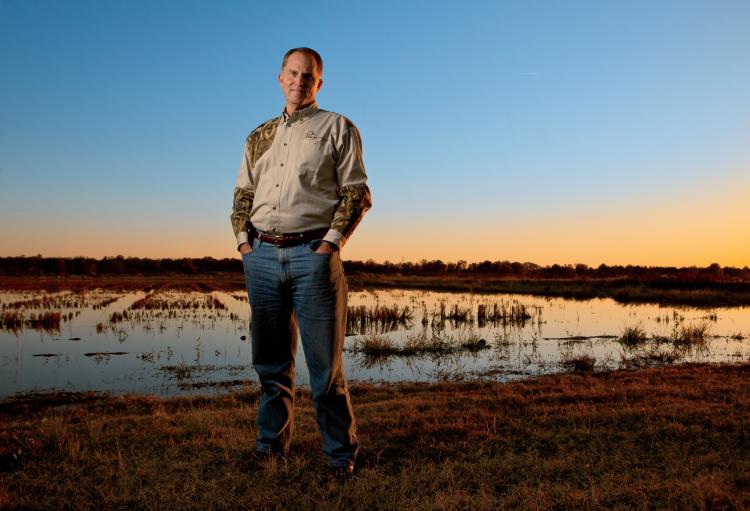Home > Arkansas > Arkansas Crops & Livestock > Right as Grain: Arkansas Leads Nation in Rice Production
Right as Grain: Arkansas Leads Nation in Rice Production

Whether it’s served buttered as a side dish or flavored with curry, soy or chile in multi-cultural dishes, rice is a staple across much of the world – and demand for it is on the rise.
That’s good news for Arkansas, which produces 49 percent of the rice supply in the United States, ranking it first in the nation. Arkansas’s rice production is valued at nearly $2 billion annually, and rice is the state’s top export. Arkansas rice growers broke records in 2012, producing 7,340 pounds per acre, up 8 percent from 2011. Rice acreage also increased to 1.3 million acres in 2012 compared with 1.2 million acres in 2011.
Feeding the World
The future looks even brighter, says Riceland Foods president and CEO Danny Kennedy, because the math is on the side of rice farmers.
“Today’s world population of 6.8 billion people is expected to grow to 9.1 billion by the year 2050,” he says. “About half the earth’s population consumes rice as a primary component of their diets. World rice consumption will continue to increase in order to feed the expanding population.”
Approximately 60 percent of the rice grown in the United States is consumed here. Rice grown in the U.S. accounts for 12 percent of the global export market, making the U.S. the fourth-largest rice exporting country. Arkansas exports an estimated $1 billion in rice annually to markets in Canada, Mexico, Central America, Haiti and Saudi Arabia.
Riceland Foods is a world leader with a local focus, says Bill Reed, vice president of corporate communications for Riceland.
“We are the largest rice milling and marketing company in the world, but to be specific, Riceland is a cooperative of family farmers who work together to market their product,” Reed says. “We market a lot of rice, but it’s a lot of rice grown by a lot of Arkansas family farmers.”

The Right Conditions
Riceland marked 90 years as a farmer-owned co-op at the end of 2011. Reed says each year Riceland’s members deliver more than 125 million bushels of grain to the cooperative’s 30 grain facilities.
Rice is a water-intensive crop, and the clay soil base just below the silt loam of the Grand Prairie is ideal for holding water. Farmers typically plant rice crops in late March or early April and harvest in August and September by threshing their fields with combines and delivering the rice to be stored and milled throughout the year. After harvest, the fields are flooded to prevent erosion, protect soil nutrients and control weeds.
“You have to have excellent water resources to grow rice and the right topography,” says Keith Glover, president/CEO of Producers Rice Mill in Stuttgart, which mills more than 50 million bushels of rice annually. “We get more than 40 inches of rain each year, and we have abundant surface reservoirs and rivers flowing through the state to help with irrigation.”

The Crop’s Origin
Glover says rice production got started in the south, mainly around the coasts of south Louisiana and Texas.
“Over time, the main production of rice migrated up to Arkansas where we have the water and land type that is conducive for growing rice, and some of the most competitive production costs in the country,” he says.
That movement north came when W.H. Fuller took a hunting trip in 1896 to Louisiana and saw rice fields. He learned about growing rice and eventually chose the Grand Prairie in Arkansas to plant his first fields in 1904, harvesting 5,000 bushels that first year.
Rice farmer George Dunklin’s grandfather, L.A. Black of Dewitt, planted his first fields in 1907. After college at Memphis State, Dunklin returned to Arkansas and began learning the rice farming business from the ground up.
“I fell in love with it,” he says. “Growing rice came easily in Arkansas. The prairies are flat which makes it easy to flood, and water is plentiful. Rice requires water in the paddies, which is the land between the levies. There’s a natural topography to the land on the prairie that fits perfectly for rice.”



